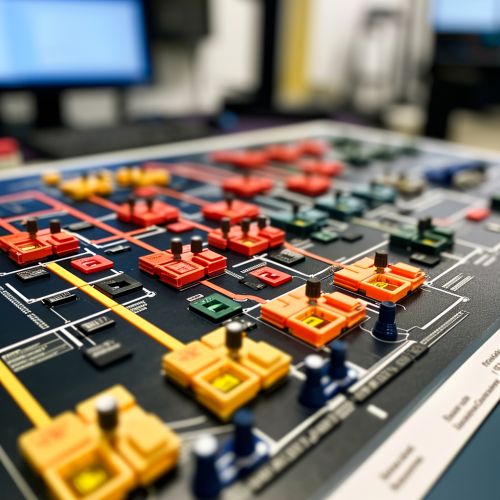Fault tree analysis
Overview
Fault Tree Analysis (FTA) is a systematic, deductive failure analysis method that is used primarily in safety engineering and reliability engineering to understand how systems can fail, to identify the best ways to reduce risk or to determine (or get a feeling for) event rates of a safety accident or a particular system level (functional) failure. FTA is used in the aerospace, nuclear power, chemical and process, pharmaceutical, petrochemical and other high-hazard industries; but is also used in fields as diverse as risk factor identification relating to social service system failure.
History
Fault tree analysis was first introduced by Bell Laboratories and is extensively used in the fields of reliability engineering, system safety engineering, and quality engineering. The use of fault trees has also been extended to analyze various other types of problems such as software, hardware, human reliability, logistics, medical, and even legal issues.
Methodology
The fault tree is a logical diagram that displays the state of a system (top event) in terms of the states of its components (basic events). The fault tree uses AND and OR gates to depict the combinations of component states that will result in the system failure. The basic events are typically failures in the functions of components of the system. The fault tree can be quantified with failure probabilities or rates for the basic events, which are then combined to compute the probability or rate of the top event. This quantification uses Boolean algebra to calculate the probabilities of the combinations of the basic events.
Basic Symbols Used in Fault Tree Analysis
Fault tree analysis uses a set of symbols to represent events and their relationships. The most common symbols used in FTA are:
- Event: An event is represented by a rectangle and is used to describe a failure or error condition. - AND Gate: An AND gate is represented by a flat-topped 'D' shape and is used when an output event occurs only if all input events occur. - OR Gate: An OR gate is represented by a curved 'D' shape and is used when an output event occurs if any of the input events occur. - Basic Event: A basic event is represented by a circle and is used to indicate a fault source. - Transfer Symbol: A transfer symbol is represented by a triangle and is used to point to another part of the tree where the event is further developed. - Inhibit Gate: An inhibit gate is represented by a diamond shape and is used to model that an event occurs only when an input and a specific condition occur.
Steps in Fault Tree Analysis
The process of fault tree analysis consists of several steps:
1. Define the system to be analyzed. 2. Define the top event of the fault tree. 3. Identify and categorize the potential causes of the top event. 4. Construct the fault tree by connecting the causes from step 3 using logic gates. 5. Evaluate the fault tree. 6. Document the results.
Applications
Fault tree analysis has a wide range of applications in various fields. It is used in the aerospace industry to predict and mitigate the risks of system failures. In the nuclear power industry, FTA is used to analyze the safety and reliability of nuclear reactors. In the chemical and process industries, FTA is used to identify and eliminate potential hazards. In the pharmaceutical industry, FTA is used to ensure the safety and efficacy of drugs. In the petrochemical industry, FTA is used to analyze and prevent accidents. In the field of social services, FTA is used to identify risk factors related to system failure.
Advantages and Disadvantages
Like any other analytical method, fault tree analysis has its advantages and disadvantages. The main advantage of FTA is its ability to provide a systematic approach for identifying the causes of a failure. It also provides a visual representation of the failure modes, which can be easily understood by non-technical personnel. On the other hand, the main disadvantage of FTA is that it can be time-consuming and complex, especially for large and complex systems. Moreover, the accuracy of the analysis depends on the accuracy of the input data.
See Also
Reliability Engineering Safety Engineering Risk Management


